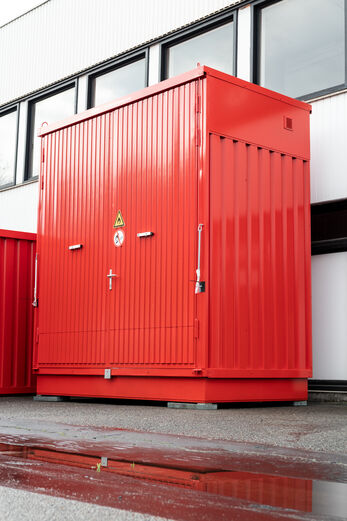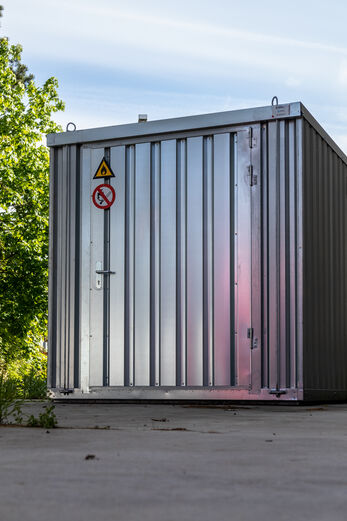What do I need to know about storage in containers?
A storage or environmental container allows the user to safely store hazardous and/or flammable products in compliance with regulations.

The choice of a specific type of container primarily depends on its intended use:
- If the hazardous products are placed in the container with a forklift and no smaller containers need to be 'picked', then non-walk-in storage
containers are the ideal solution.
- If you often handle small quantities of products and thus smaller containers, it is best to choose a walk-in storage container.
If desired, CGK can also provide both types of containers with thermal insulation or fire-resistant construction. This allows you to store your products frost-free and fire-protected.
I would like to request a quotation.
Voordelen van een opslagcontainer
Compared to indoor storage, outdoor storage solutions are much more cost-effective. Regulations impose specific requirements for indoor storage, such as ventilation and fire protection. These factors often lead to high costs.
Additional advantages of outdoor storage containers include:
no structural modifications required to create a storage area within existing buildings.
- storage containers can always be relocated when empty, should it be necessary due to expansion.
- no building permit required. However, we recommend notifying the Spatial Planning department.
- they are specifically built for the storage of hazardous materials. The construction is tested and/or certified.
Did you know that at CGK, it is also possible to rent a storage container instead of buying one?
Request a quotation
"Get more information or request a free, no-obligation quotation."
Frequently asked questions: What do I need to know about storage in containers?
Storage containers must be fire-resistant when you wish to store flammable liquids (group 1) inside, adjacent to, or outside of business buildings. However, there are situations where a standard container is also permitted.
- when using a safety screen.
e.g. the wall of the building is made of concrete panels or of material with a certain fire resistance - the container is placed at a safe distance from business buildings and/or property boundaries.
The rule here is a minimum distance of 10 meters from business buildings and a minimum of 5 meters from the property boundary.
The rule described in Article 5.17.7.3 of VLAREM II also applies here.
Summary
- Storage locations situated within a protection zone and/or water catchment area:
In these zones, you must provide a containment volume for all hazardous substances, meaning 100% of the total quantity of stored substances must be contained. - Storage locations situated outside water catchment areas or protected zones:
Here, you should provide a containment volume of 10% of the total volume of products you intend to stockpile.
The container must be able to contain at least 100% of the largest container.
For flammable products, you must be able to contain 25% of the total volume. Again, the container must be able to contain at least 100% of the largest container.
It is not mandatory. However, some products lose their characteristics or become unusable if exposed to frost or high temperatures.
In such cases, it is advisable to choose a thermally insulated container with heating and/or cooling capabilities.Weet dat onze brandwerende containers steeds geïsoleerd zijn.
No, you cannot simply store all products together.
It is advisable to know exactly which products you are dealing with and whether they can or cannot come into contact with certain substances.
This applies to storage in catch trays, safety cabinets, storage containers, etc.
In addition to separate containers, certain distances must be respected between different hazard groups. Consult the distance table.
Tip: It's best to create an inventory of the different product groups.